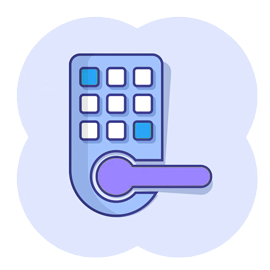Physical Security
In the world of cybersecurity, Physical Security is often considered the first line of defense. The main objective of physical security is to protect important items, people, or data inside a secured facility. In order to be successful, an organization must use three key components: Prevention, Detection, and Recovery.
Prevention:
Prevention has a primary goal meant to discourage and prevent theft. Formidable prevention may consist of security guards, fences, key fobs, locked doors, and many other obstacles to prevent or deter theft.Detection:
Detention refers to the realization of a breach in security or identifying when an event happens. If there is an unauthorized person in an area they should not be, they should be identified quickly. This allows for corrective measures to be performed if an event occurs.Recovery
Recovery is how the organization or facility can review and correct the security issue. This may include adding more security checkpoints, guards, cameras, or other preventative measures.Layered Physical Security and Physical Access Security
Physical Security can be utilized in several different ways, but the most effective physical security system is layered. This means that if one layer or obstacle fails or is breached by an attacker, that attacker has another level of security to pass through. For example, a bank would place precious items in a locked safety deposit box. This box would then be placed in the bank vault with only one locked access door. This vault would be guarded by security guards and watched by security cameras. If an attacker would want to access the precious items in the safety deposit box, they would have to pass through all the layers of security. These layers can be organized into three main parts that make up Physical Access Security.Perimeter Security
Perimeter security is the outer most layer. This consists of fences or walls, guards, and security cameras.